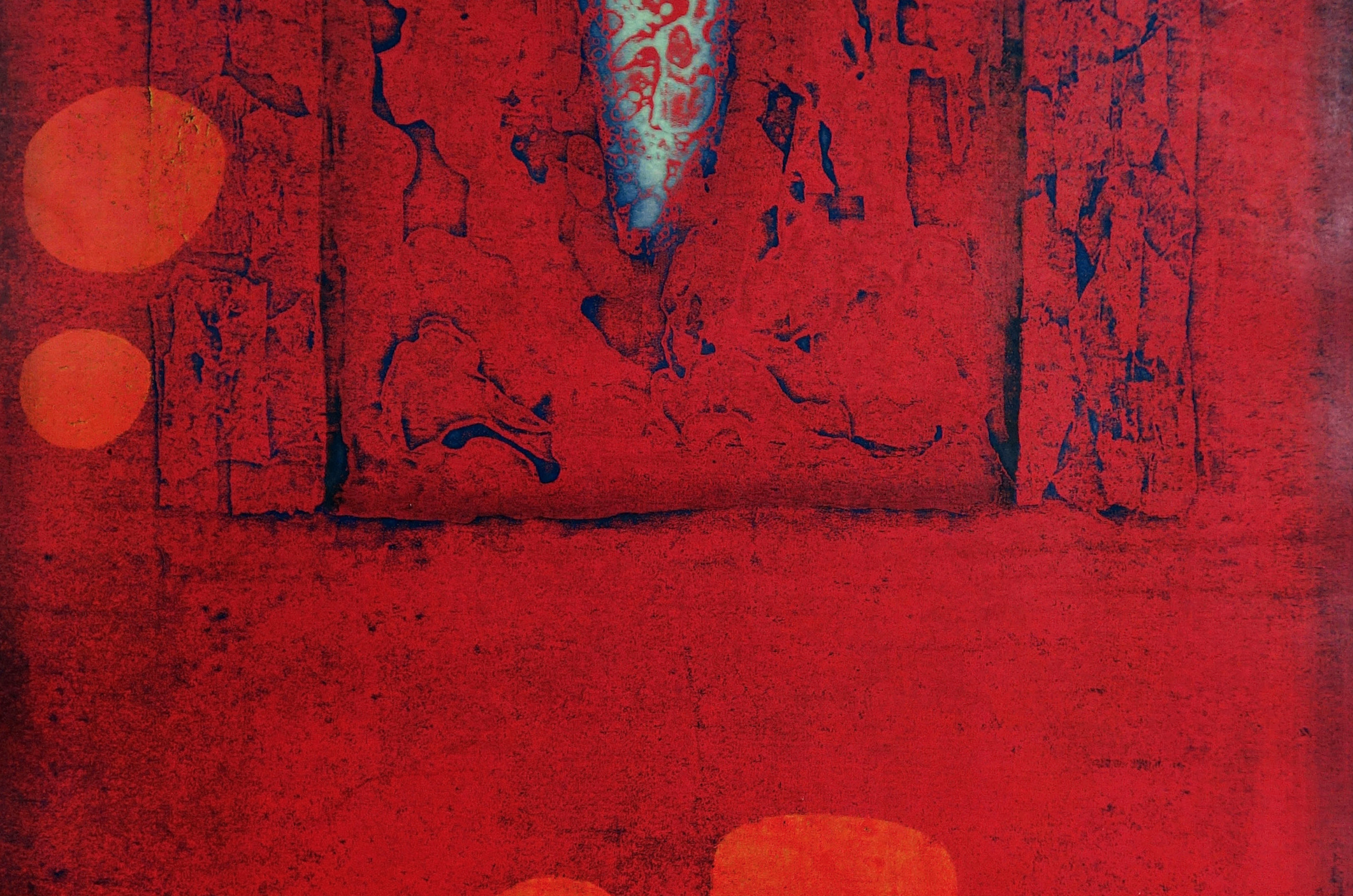TAJIMA
COLLECTING JAPANESE PRINTS FEATURED CONTEMPORARY ARTISTHiroyuki Tajima
1911 - 1984
Hiroyuki Tajima was a contemporary sosaku hanga artist born in Tokyo in 1911. After graduating from Nihon University in 1932, Tajima enrolled in the Western-style painting division of the Tokyo School of Fine Arts and was deeply influenced by dadaism and surrealism.
Upon completing his studies in 1934, Tajima began learning mokuhan techniques under Nagase Yoshio and fabric dyeing with Hirokawa Matsugoro. In 1946 Tajima began producing hanga and joined the abstract-surrealist organization Bijutsu Bunka Kyokai. After four years as an active member of Bijutsu Bunka, he took a two-year hiatus to write short stories and poetry. Tajima resumed printmaking in 1952 and became a member of Nihon Hanga Kyokai in 1963. Throughout the 1960s and 1970s, he developed an abstract style based on an amalgamation of Asian calligraphy, traditional Japanese paintings, and spatial senses derived from Zen Buddhism. His works feature densely pigmented, abstract images with solid structures and glowing colors. He achieved this unusual effect by utilizing shellac, shredded paper, dyes, and other natural materials on woodblocks for low-relief printing. The result was complex textures in rich colors.
Tajima was soon represented at international biennales in Seoul and Tokyo the following year and continued to grow in fame and stature. His luminescent prints are considered to be some of the most significant abstract art of the postwar period. Tajima Hiroyuki passed away in 1984 at the age of seventy-three.



